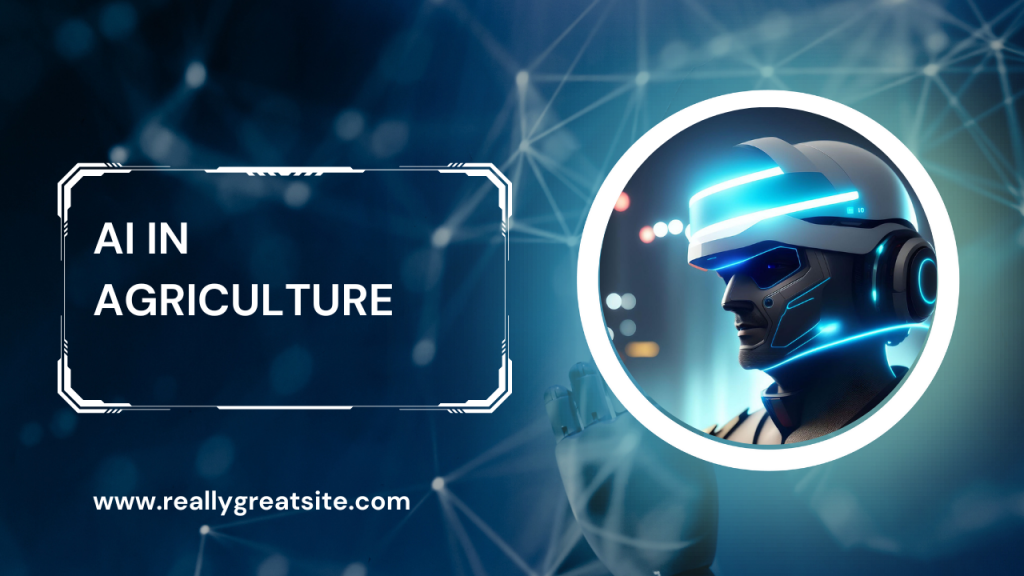
AI in Agriculture
AI in Agriculture: Revolutionizing Precision Farming and Sustainable Practices
Table of Contents
-
Introduction
-
The Promise of AI in Agriculture
-
Precision Agriculture and AI
-
AI-Powered Crop Monitoring
-
Sustainable Farming with AI
-
Benefits of AI in Agriculture
-
Implementing AI Solutions
-
Challenges and Considerations
-
The Future of AI in Agriculture
-
Conclusion
-
FAQs
-
Introduction
The world of agriculture is undergoing a transformative shift, thanks to the integration of Artificial Intelligence (AI). AI in agriculture, often referred to as “precision farming,” is revolutionizing the way we cultivate crops, monitor their health, and practice sustainable agriculture. This article explores the role of AI in agriculture, highlighting its impact on precision farming, crop monitoring, and sustainable practices.
-
The Promise of AI in Agriculture
AI holds immense promise in agriculture, offering innovative solutions that address the challenges faced by farmers and the growing demand for sustainable food production. It encompasses a range of technologies, from machine learning to drones and sensors, all aimed at optimizing farming practices.
-
Precision Agriculture and AI
3.1. Understanding Precision Agriculture
Precision agriculture involves the use of data-driven technologies to tailor farming practices, such as planting, irrigation, and fertilization, to individual fields or even individual plants.
3.2. How AI Enhances Precision Agriculture
AI algorithms analyze data from various sources, including satellites and sensors, to provide farmers with real-time insights into their crops’ health and needs. This leads to more efficient resource allocation and higher crop yields.
-
AI-Powered Crop Monitoring
4.1. Remote Sensing and Imaging
AI-driven remote sensing and imaging technologies allow farmers to monitor their fields from afar, detecting issues like pest infestations or nutrient deficiencies early.
4.2. Predictive Analytics
AI can predict crop diseases and weather patterns, enabling farmers to take proactive measures to protect their crops.
-
Sustainable Farming with AI
AI plays a pivotal role in sustainable farming practices, promoting environmental conservation and resource efficiency.
-
Benefits of AI in Agriculture
6.1. Increased Crop Yields
Precision farming powered by AI can lead to significantly higher crop yields, ensuring food security for a growing global population.
6.2. Reduced Environmental Impact
By optimizing resource use, AI in agriculture minimizes the environmental footprint of farming, reducing water and chemical usage.
6.3. Lower Operational Costs
AI streamlines farming operations, leading to cost savings and improved profitability for farmers.
-
Implementing AI Solutions
Farmers can integrate AI into their practices through specialized software and hardware solutions. Training and support are essential to maximize the benefits of AI in agriculture.
-
Challenges and Considerations
While AI offers numerous advantages, challenges include data security, initial investment costs, and the need for farmers to adapt to new technologies.
-
The Future of AI in Agriculture
As AI technology continues to advance, the future of agriculture holds the promise of even more efficient and sustainable farming practices.
-
Conclusion
In conclusion, AI in agriculture is reshaping the farming landscape. It empowers farmers with data-driven insights, enabling them to practice precision agriculture, monitor crops effectively, and adopt sustainable farming practices. The benefits are clear: increased yields, reduced environmental impact, and lower operational costs. As AI in agriculture continues to evolve, it holds the key to a more sustainable and productive future for farming.
-
FAQs
Q1. What is precision agriculture?
Precision agriculture is an approach that uses data-driven technologies, including AI, to tailor farming practices to individual fields or plants, optimizing resource use.
Q2. How does AI monitor crop health?
AI uses remote sensing, imaging, and predictive analytics to monitor crop health, detect issues early, and provide recommendations to farmers.
Q3. What are the environmental benefits of AI in agriculture?
AI in agriculture reduces resource usage, minimizing the environmental impact of farming, including lower water and chemical usage.
Q4. Is AI in agriculture accessible to small-scale farmers?
AI solutions are becoming more accessible, but challenges such as initial costs and training still need to be addressed for small-scale farmers.
Q5. What can we expect in the future of AI in agriculture?
The future holds more efficient and sustainable farming practices, with AI playing a central role in optimizing agriculture operations.
How is AI used in agriculture?
AI in agriculture is used for tasks like crop monitoring, pest control, irrigation management, and yield prediction to improve farming efficiency and productivity.
What is the role of AI in smart agriculture?
The role of AI in smart agriculture is to improve farming efficiency and sustainability by using data and technology to optimize processes, monitor crops, and enhance decision-making.
What is the role of AI in agriculture in India?
The role of AI in agriculture in India is to enhance farming practices by providing data-driven insights for precision farming. AI helps Indian farmers optimize resource usage, monitor crop health, and make informed decisions, ultimately increasing crop yields and sustainability
What are the examples of artificial intelligence in agriculture in India?
In India, artificial intelligence (AI) is making significant strides in agriculture. Examples include:
-
Crop Monitoring: AI-powered drones and satellites capture real-time data on crop health, enabling early detection of diseases and nutrient deficiencies.
-
Weather Forecasting: AI-driven weather prediction models help farmers plan planting and harvesting times, reducing crop loss due to adverse weather.
-
Pest Control: AI algorithms identify and manage pest outbreaks, minimizing crop damage and pesticide usage.
-
Soil Health Analysis: AI-based soil testing provides precise recommendations for fertilizer and irrigation, optimizing resource use.
-
Yield Prediction: AI predicts crop yields, aiding in market planning and preventing food waste.
These examples demonstrate AI’s potential to revolutionize Indian agriculture for increased productivity and sustainability.
what is AI // क्या है ai //type of ai
what is machine learning (ml)?what is a risk to data when training a machine learning (ml) application?
Reinforcement learning- (RL)-What is RL in reinforcement?-introduction
first Python programming-introduction Python programming